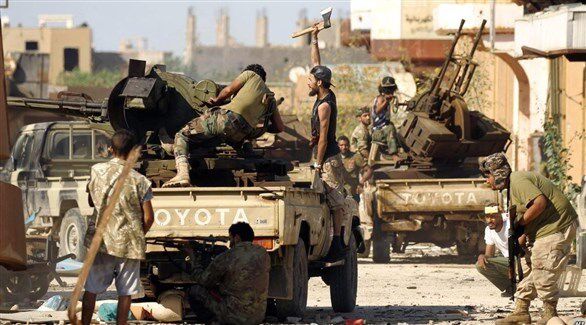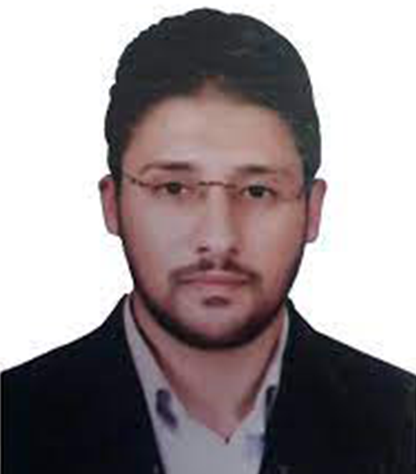The issue of armed militias in the Middle East remains one of the main challenges facing many countries. Over the past years, various armed militias have succeeded in consolidating their influence, thereby undermining many of traditional assumptions regarding the modern nation-state was based, such as monopoly over the use of force. Armed organizations have emerged as competitors to the state, to its competencies and sovereignty over its entire territories. Internecine conflicts in several regional countries over the past years have enabled militias to expand their influence and bring about radical changes in power interactions and resource allocation within their states.
There is a wide debate over how to deal with the rising influence of militias in the region. There have recently been efforts to withdraw mercenaries from Libya, viewing this as necessary to continue the political path and complete electoral procedures. The same is true of the armed militias present in Syria, especially given a good proportion of these militias are composed of non-national fighters, who were brought in to participate in the conflict.
The issue has also come under renewed focus in Iraq, and was raised by Sadrist leader, and the biggest winner in the recent legislative elections Muqtada al-Sadr. In statements on November 18, al-Sadr demanded the immediate dissolution of all armed factions, and the handover of their weapons to the armed forces under the supervision of its commander in chief. A day after these statements, Al-Sadr announced on Twitter that the militias affiliated with his organization had been dissolved and its headquarters closed. He hoped this would be a step towards dissolving all armed factions, and that they too would hand over their weapons, and close their headquarters.
Complications
Despite the growing demand, resolving the issue of militias is fraught with complications, the most important of these include:
Militias as an alternative to the state: Current conflicts in the region have produced patterns of interaction in which the state is no longer the most prominent actor. Non-state actors have emerged as equally important parties, with the ability to influence outcomes. Armed militias have therefore become able to redefine these conflicts, by offering different narratives. In many instances, militias have come to represent an alternative authority to regime and state institutions. In fact, some of these militias have developed a type of institutional authority similar to that of the state, in areas under their control.
As such, armed militias are contributing to the disintegration of “the state” in the region, or at the very least, transforming its features. Some of these militias espouse a different view of how the state should function and have taken advantage of their growing power to implement this vision. Kurdish militias in northern Syria are an example, whereby the Syrian Democratic Forces and the Democratic Union Party have exploited the existing conflict in order to establish a type of autonomy, in areas under their control, in line with historical Kurdish demands.
The economies of war: Conflicts in the region since the Arab Spring have led to the deterioration of the state’s authority and ability to perform its functions, opening the way for other forces to benefit economically. This situation is referred to as a war economy, defined by Tim Eaton as economic activities that directly or indirectly depend on the existence, management, or perpetuation of violence. Networks have emerged to benefit from the war economy in conflict zones, and therefore have an interest in the continuation of the conflict. In Libya, for example, armed militias compete for the control of smuggling routes, oil and natural gas infrastructure, border posts, and transportation infrastructure, as important sources of revenue. In Syria as well, there is what is referred to as the crime-conflict nexus, where organized crime has become a source of income used to fuel violence.
The balance of power structure: Armed militias have become an important component of the balance of power with respect to regional conflicts and have become tools for some regional powers to achieve their interests. Moreover, some regimes have resorted to violent actors outside official circles to counterbalance pressures by opposing forces in conflicts. This has led to the phenomenon known as the “Transactional State”. As described by Lina Al-Khatib and Lina Sinjab, this is a state based on deals between the regime and its supporters, whereby the influence of the small circle of power within the regime grows, while those who deal with the regime pursue primarily their own interests. T.
Proxy wars: Armed militias have played a major role in the playing out of proxy wars, as regional conflicts can no longer really be described as internecine. They are in fact hybrid conflicts, in which external actors interfere, having certain interests that they seek to achieve. This invokes the idea of proxy war, which refers to the growing tendency to rely on non-state actors as agents of war. Grant Hughes defines this as “a non-state actor receiving assistance from external forces to influence the dynamics of conflict”.
In Libya, for example, several militias are backed by external parties. Syrian was also a significant model for proxy struggles. Iran was a primary player, as it would not accept the fall of the Assad regime, especially since some armed militias in the opposition camp also received support from regional powers such as Turkey, and international powers such as the United States, to bring the regime down.
Exclusion as opposed to inclusiveness: The diverse map of armed non-state actors, and the nature of conflicts in the region have given rise to a debate over integrating all these elements or excluding some of the in-post conflict arrangements. This debate especially focuses on armed actors with separatist demands that seek to re-shape the nation state, as well as terrorist organizations such as ISIS, which tried to create a different model of a state, on land carved out from both Syria and Iraq. The dilemma of exclusion and integration of armed actors has also raised the issue of societal legitimacy, as implementing programs to integrate armed actors presupposes a degree of societal legitimacy, whereby societies accept to integrate armed groups that were involved in violence.
Possible Paths
These complications have implications for the future of armed militias in the region, which could follow a number of possible paths:
Armed confrontation: The realist perspective elevates the importance of force, and the use of repressive means to pressure, marginalize, and exclude armed organizations from the political context. Undoubtedly this will be one of the possible paths for states to deal with armed militias, especially since these militias continue to insist on undermining the peaceful political process in some countries. This was the case in Iraq, where violent incidents occurred following the announcement of the results of the legislative elections in October. The attempt to assassinate Prime Minister Mustafa Al-Kadhimi, on November 7th, was also a significant example, as many reports indicated that armed militias were involved.
Integration into state institutions: This is one of the main options presented in dealing with armed militias. It is based on the assumptions of the institutional approach, which prioritizes procedures, rules, and institutional forms that recognize the interests of the parties to the conflict, thus dedicating a state of peaceful coexistence between all actors. The basic idea is that armed organizations can be integrated into the political process through various mechanisms, foremost among which is the distribution of resources and the sharing of political responsibility.
Attempts to implement this model have been made in Iraq, where mechanisms have been proposed to integrate members of the Popular Mobilization militia into Iraqi institutions, especially after the role they played in the military operations against ISIS. This was revealed by former Prime Minister Haider al-Abadi in his speech on December 9, 2017, when he declared victory over ISIS. In this speech, he thanked military and security institutions, as well as a number of armed groups and factions, particularly the Popular Mobilization Forces, for their role in the victory.
Attempting to balance militias’ influence: This is most closely related to countries that suffer from the growing influence of armed militias at the expense of the state and its institutions. Perhaps the case of Hezbollah in Lebanon is the most important model of this, whereby the group rivals the state and its institutions in its various functions. This applies to the military level, as Hezbollah is well armed, and can take unilateral decisions regarding participation in the region’s conflicts. It also impacts Lebanon’s foreign relations, as Hassan Nasrallah on occasion promotes Iran’s presence in Lebanon.
Hezbollah’s growing presence has prompted outside parties to try to balance its influence by supporting the Lebanese military establishment. The US is one of the main supporters of the Lebanese army, and a US-Lebanese defense resources conference was held on May 21, with the participation of senior leaders from the US Departments of State and Defense and the Lebanese Army. The conference included a discussion of how to support the Lebanese army economically. US Ambassador to Beirut, Dorothy Shea, announced at the conclusion of the Resolute Union Exercise, which brought together the US and Lebanese armies between May 17 and 28, her country’s intention to provide USD 120 million to the Lebanese Army for of training and defense. This is in addition to providing three coast guard boats for patrols, and USD 59 million to support the army’s capabilities in protecting and controlling the eastern borders. Shea also confirmed the US continues to consider providing more assistance to the Lebanese Army.
Moving to different localities: The persistence of conflicts, and rising demand for armed militias, especially mercenaries, may prompt the expansion of mercenaries’ military activities through consolidating relationships with private security companies. These groups may expand their activities into areas adjacent to the Middle East, which could be the scene of crises and conflicts in the coming years. There were indications of such a scenario in the Nagorno-Karabakh conflict between Azerbaijan and Armenia, where reports indicate that large numbers of Syrian mercenaries participated, in exchange for a financial fee of, according to some reports, up to USD 2,000 per month. Armenia accused Turkey of sending Syrian mercenaries to support its ally Azerbaijan.
Certain areas are candidates for mercenaries’ geographic expansion in the coming period, perhaps the most important of which is Sub-Saharan Africa, where many regional and international powers are competing for influence. This may lead to an increase in the activities of private security companies, such as the Turkish SADAT company, whose activity has increased in African countries over the past year. Reports in the past months have also indicated that there are moves to transfer Syrian mercenaries to the disputed Kashmir region between Pakistan and India.
In conclusion, it is likely that militias are likely to remain a problem and an issue of contention for Middle Eastern countries in the perceived future. This is especially true for the countries currently undergoing conflict, in light of the intersection of the interests of the regional and international powers concerned and involved in these conflicts, and the faltering efforts to resolve them through a political process.


